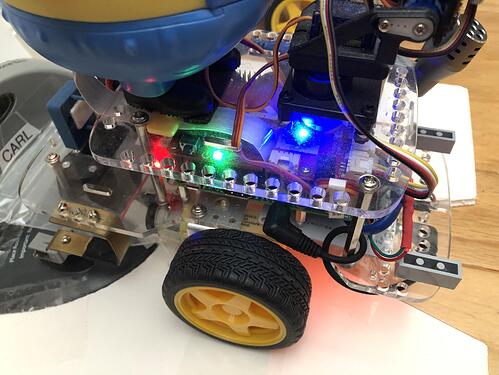OK, weird. It’s happening again, but different.
Just got back from a 2 week socially-distant road trip out west. Fired up my robot using the new USB power supply. This time the GoPiGo3’s LEFT eye LED came on GREEN (not the WiFi LED this time). This happened right away, so no warm components. I was able to run the control_panel_gui.py program via SSH. It showed the voltage as 10.5V. The LED’s did not respond to the control panel buttons, but the blinkers did, and the motors ran fine. I then used the Python REPL to import gopigo3 and try controlling directly from Python. I couldn’t turn on or off any of the LEDs (left eye, right eye, or WiFi). I could control the blinker LEDs however via the REPL. The left LED cam on that way through several reboots. After a subsequent reboot, the RIGHT eye came on WHITE. One more reboot after that - no LEDs came on. However on checking, I still couldn’t turn on/off the LEDs (either through the REPL or the control panel GUI); could still control the blinker LEDs though. I’ve tried a few more reboots - no LEDs come on.
Everything else seems to run OK. Like I said - weird.
/K



